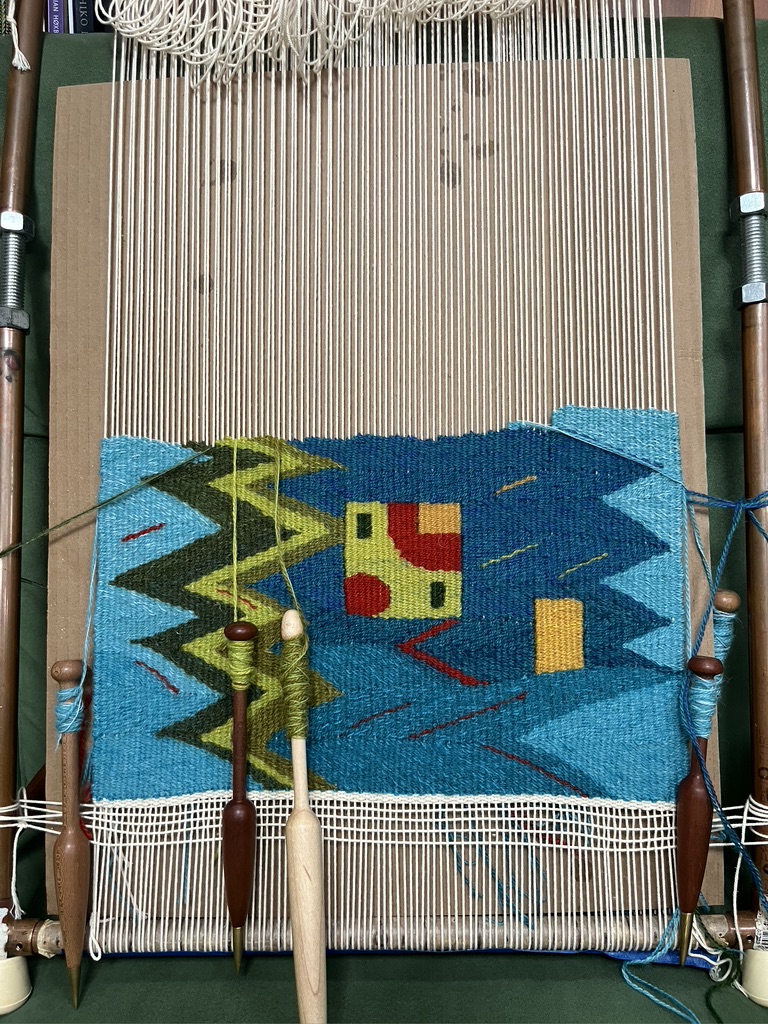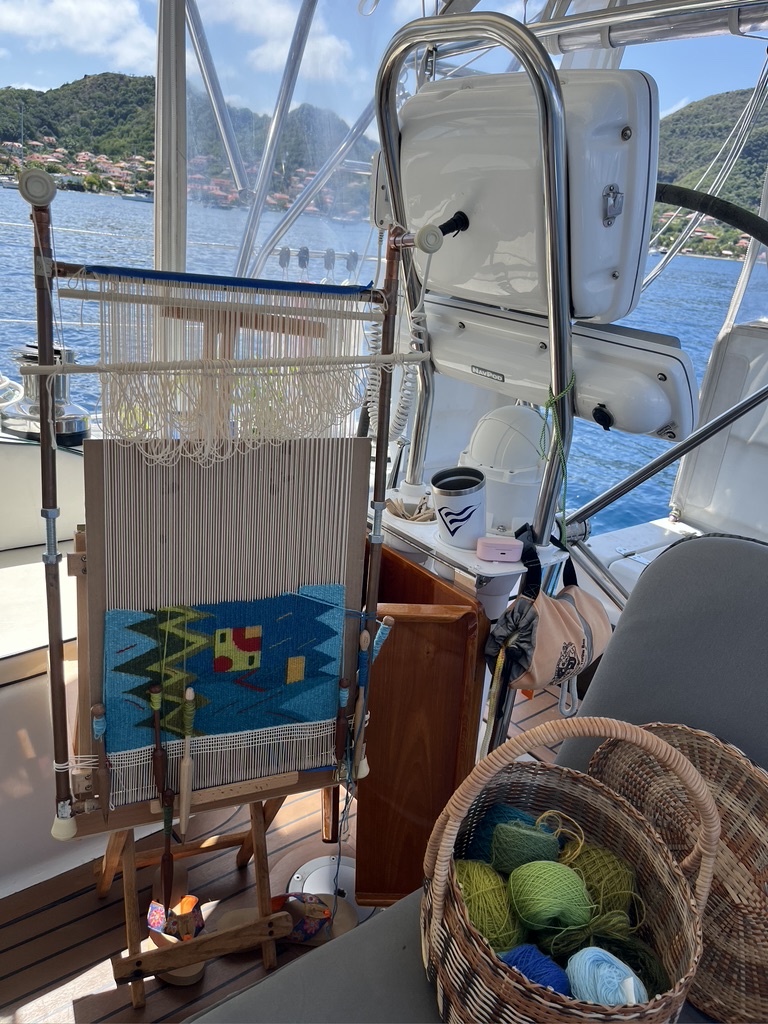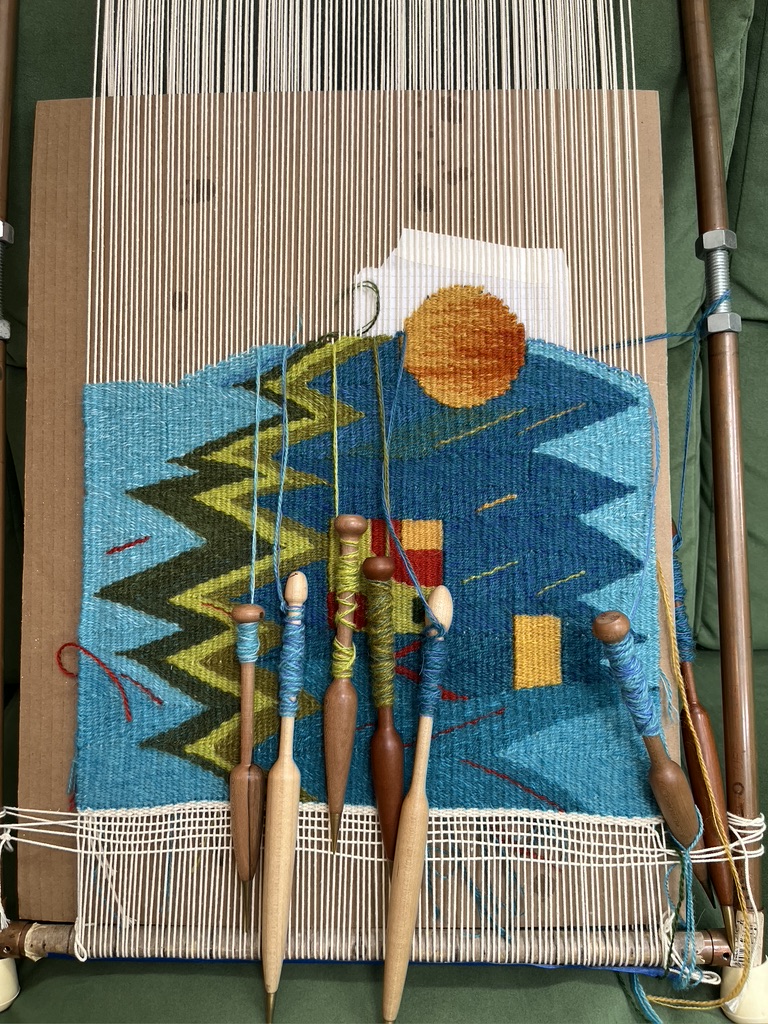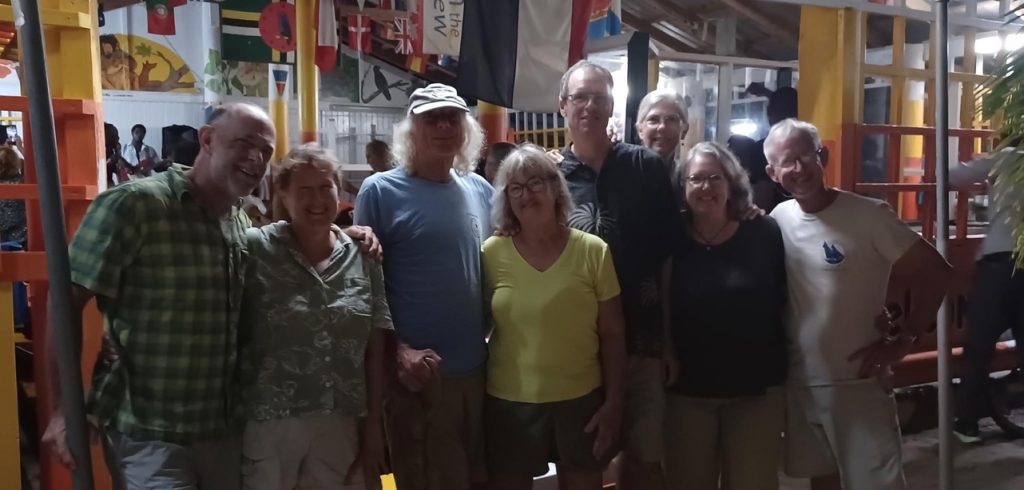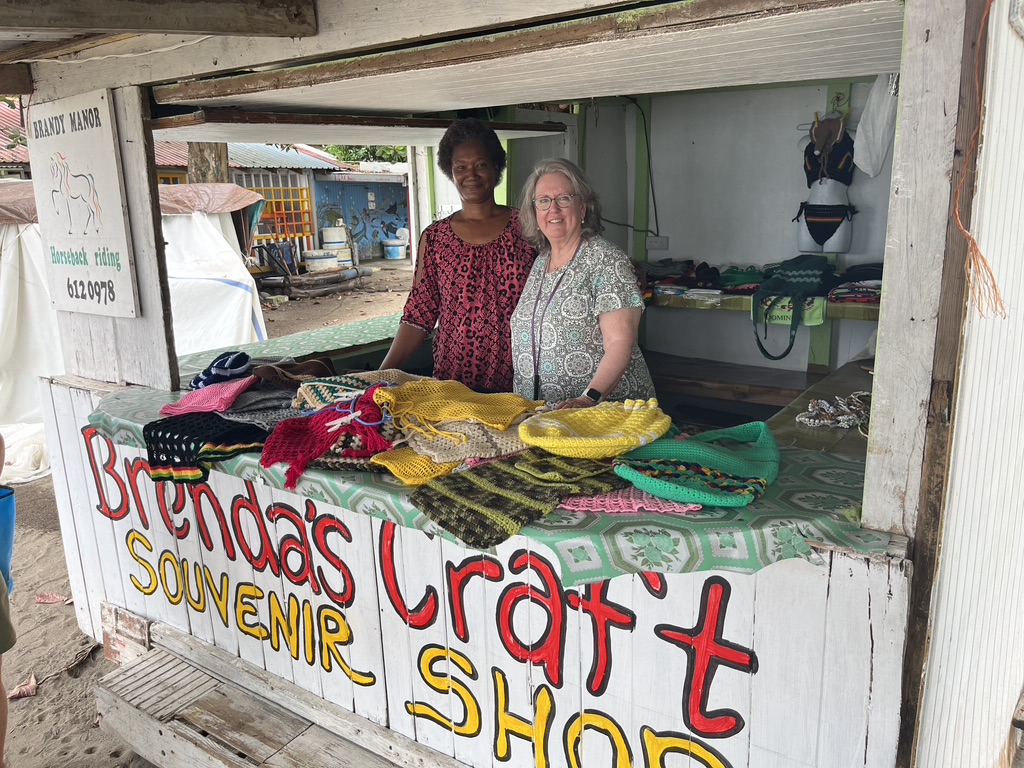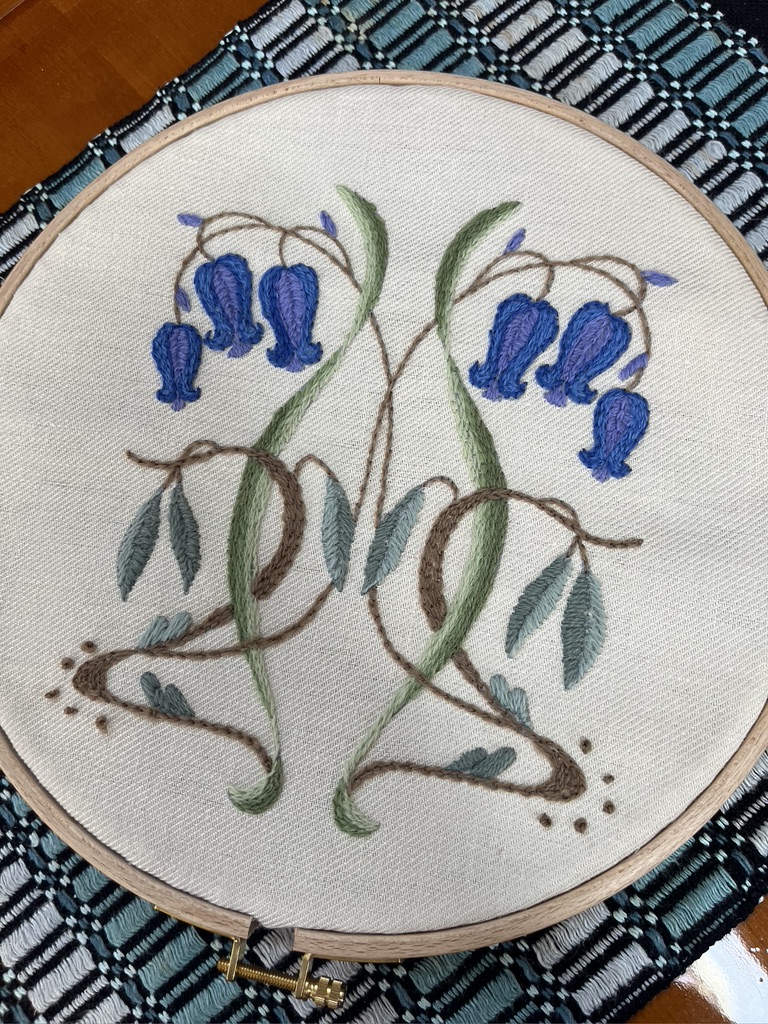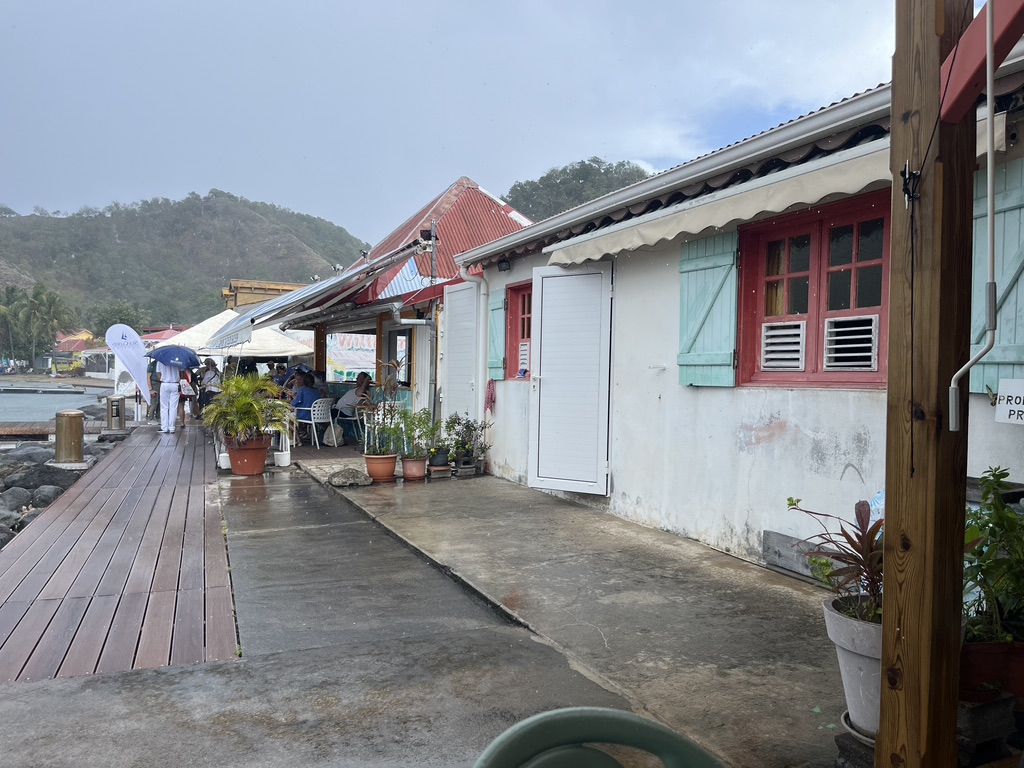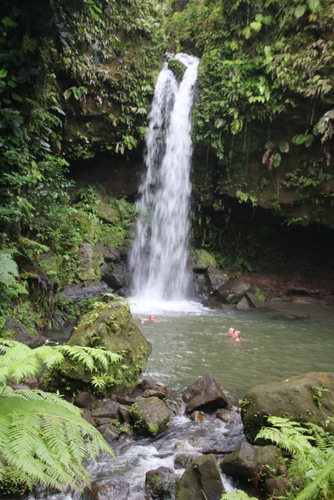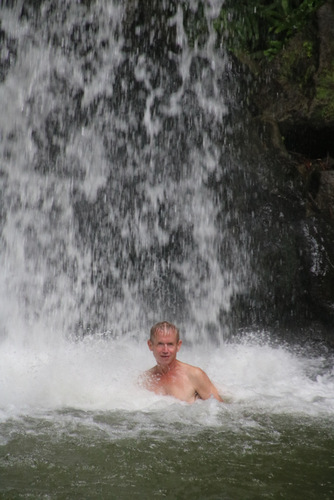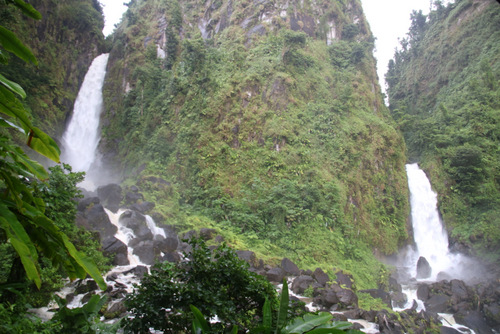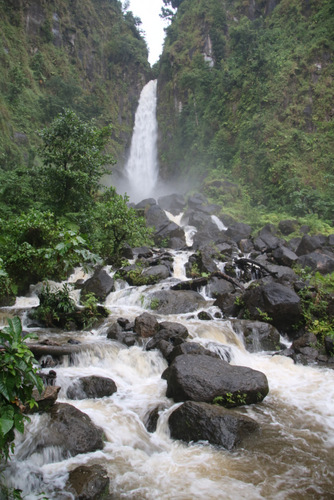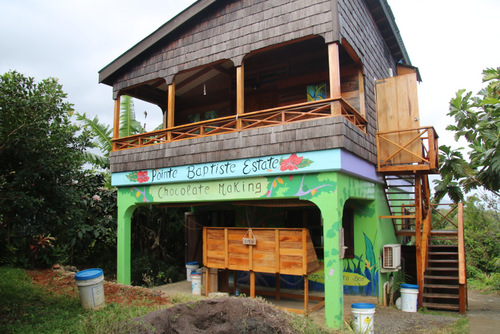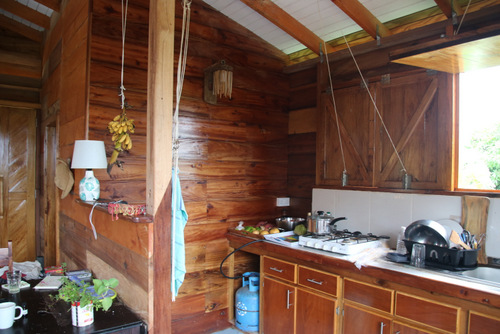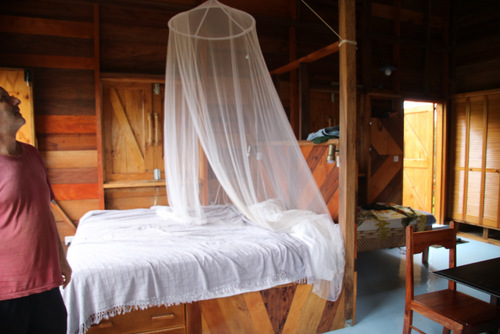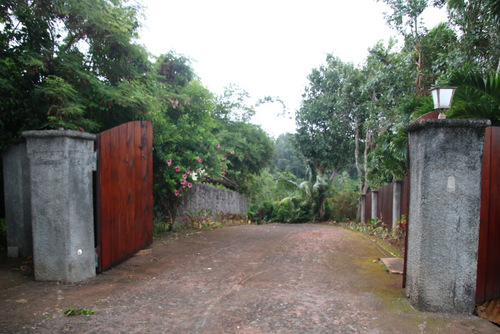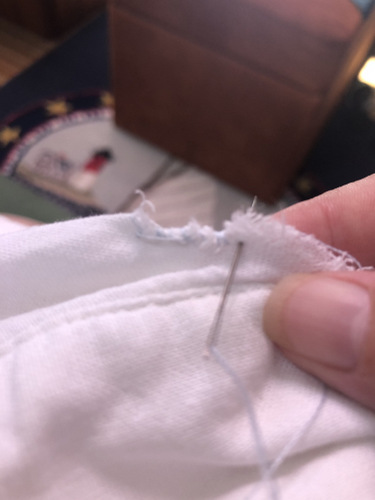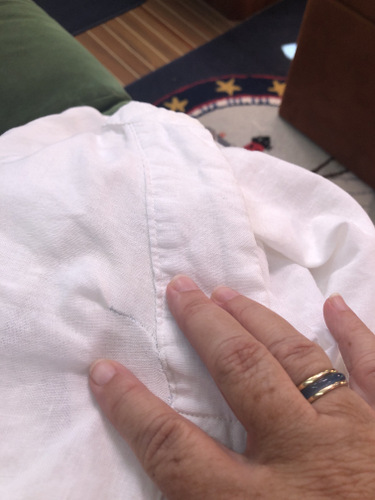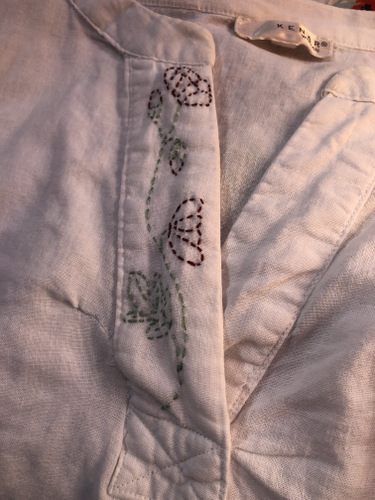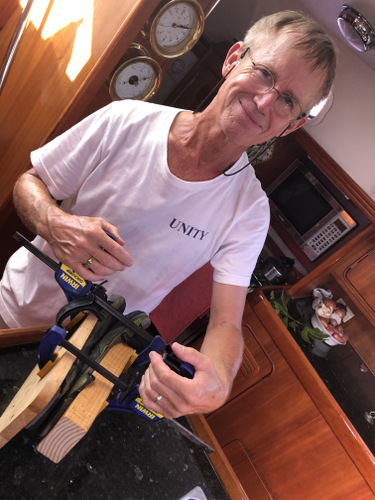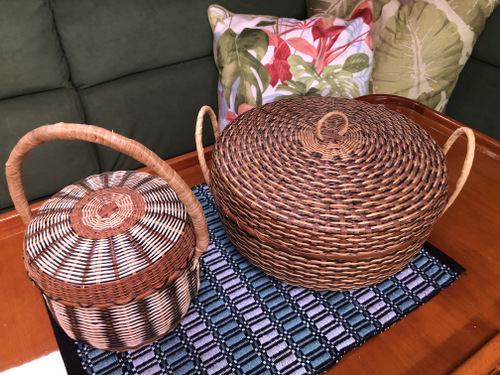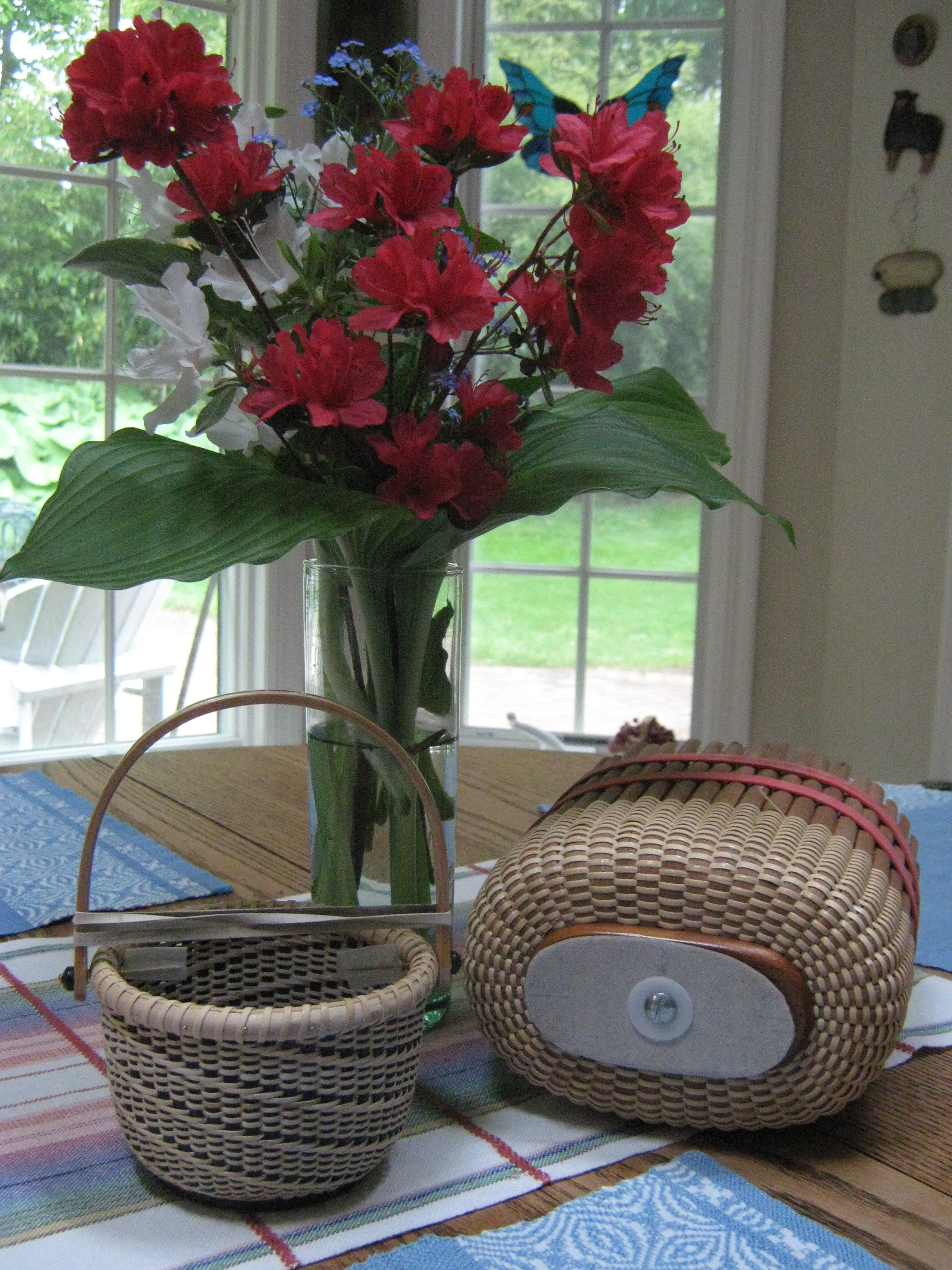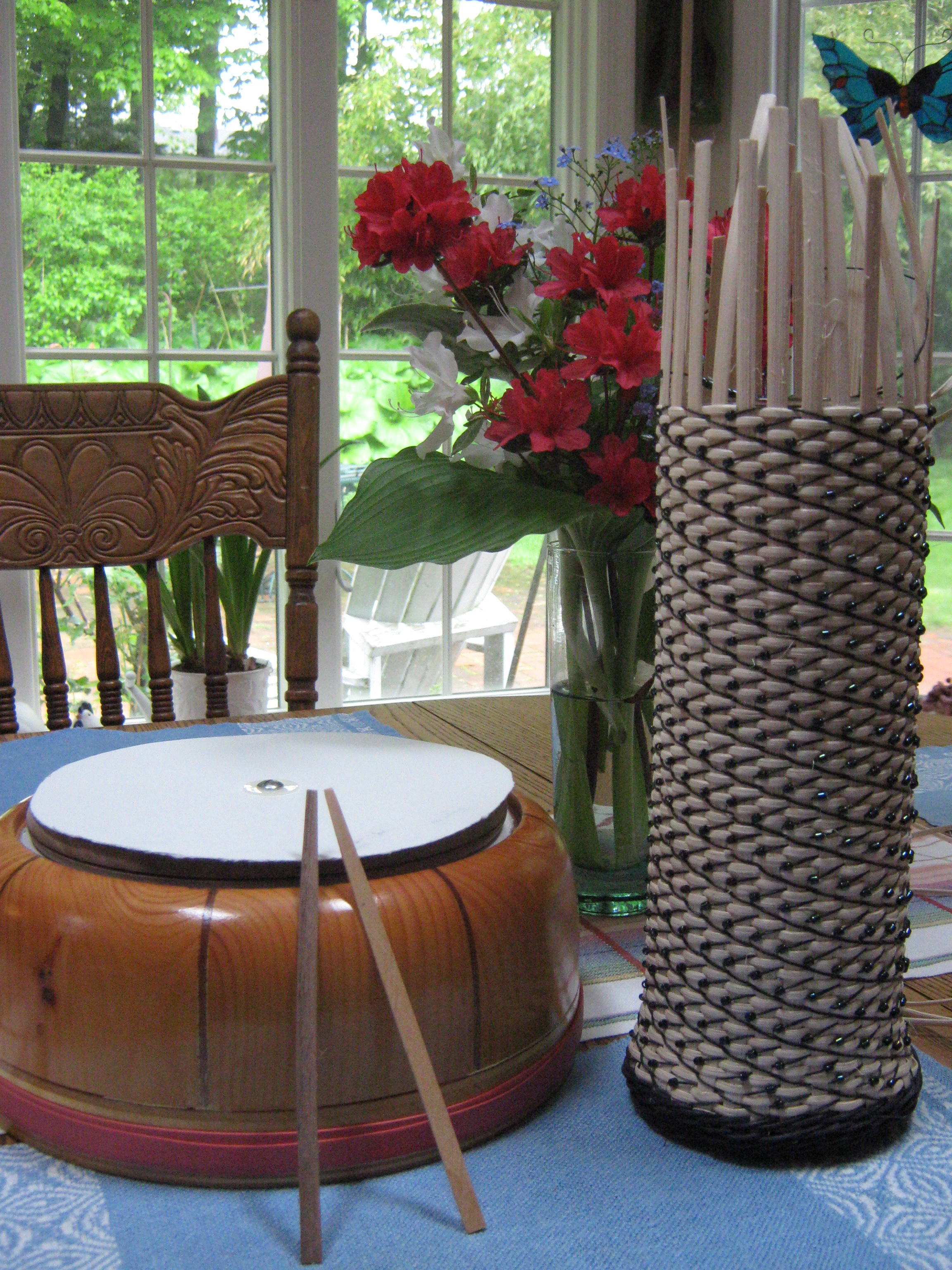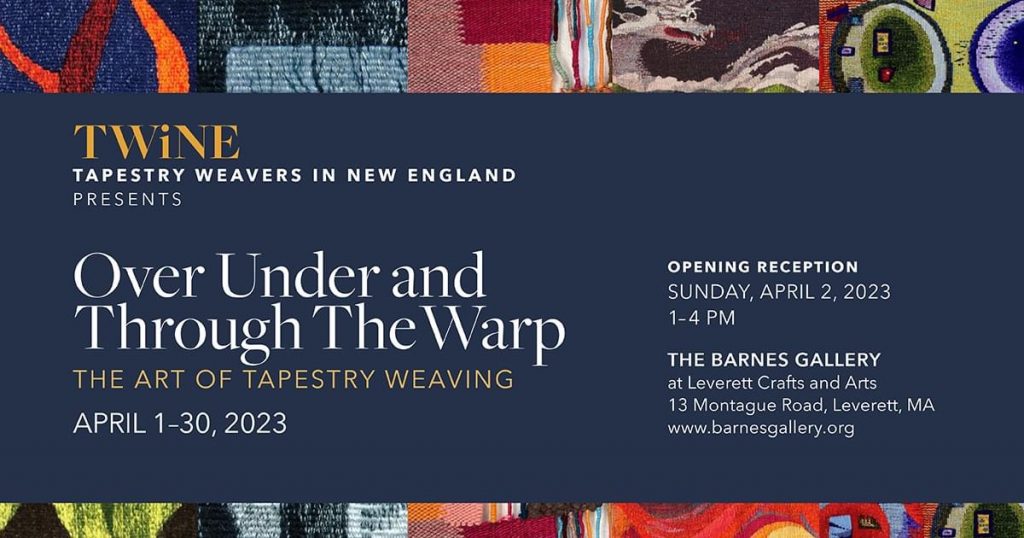We are having a rip-snorting winter season in the Caribbean. I would prefer a gentle season, but there is no bargaining with Mother Nature. Actually, I know this weather is not her fault. It’s humanity’s fault, so I am partly to blame. I won’t go into the weather here, but you can see some pretty frightening images and videos on my husband’s recent post on SailPandora. We moved to the mooring field in Les Saintes one day before this storm hit, and it was a good choice for staying safe.
Not many days have been calm enough for weaving onboard, but I am trying. I brought so many projects onboard, and I feel compelled to make progress and even finish a few of them. If I finish two tapestries I won’t have to cart the looms home with me when I fly home in April. That’s a pretty strong reason to get them done!
I am trying my hand at wedge weave, and I started this project back in July under the tutelage of Connie Lippert at the NEWS conference in Worcester, Massachusetts. For some reason my brain gets confused on which direction the wedges travel and when to continue on the diagonal or move across the warp to create a horizontal section. I may have unwoven almost as much as I’ve woven, and I don’t seem any closer to making sense of the angles. Old age? I hope not!
During the July class I added the little gold rectangle woven in Gobelins style. While onboard I wanted to add a more complex bit of Gobelins style, so I wove the square that has a couple of shapes inside it.
Here is the one glorious day when I was able to weave in the fresh air in Pandora’s cockpit.
I have consulted Connie a couple of times along the way recently. Being outside the US makes me feel a bit disconnected which can also make me wonder if I’ve taken a detour away from where I need to go to acquire some skills at wedge weave. I’ve had an impulse to add a circle to the wedge weave. I pondered this, wondering if I’d have to weave an easier shape, like a square, in order to put the circle inside it. But that is not what I envisioned. I wanted a circle with the wedges abutting the edges of the circle. Connie thought I should give it a try.
I now have my circle!…but, my wedges are going in opposite directions. I’m not sure what will happen when the wedges meet above the circle. These wedges are confusing me!
In other news I’ve made some wonderful textile purchases. Bob and I took a day trip with friends while in Dominica, to visit the private lands owned by the Kalinago nation. They are not the original inhabitants of Dominica, but they certainly predate the European settlers. The European explorers named these people the Caribe. Naturally, they prefer the name they call themselves, Kalinago. Bob and I have visited here in past years. I’m intrigued by their lifestyle which makes such good use of plant life for food, remedies, and building materials. They are well known for their baskets, and this is my third time to collect more of their beautiful baskets, which are made from a reed like plant. They condition the reeds in different ways to give color the material. To make black they bury the reeds in a pit where the minerals in the soil darkens the reed. Our friend Bill got this photo of Bob and me trying to decide what to take with us.

Here we are sitting in the shade of the beautiful community where the Kalinago live. Oops! Actually, this is another day we spent together in Deshaies, Guadeloupe! We are with Bill and Maureen from Kalunamoo.

And since I’m adding photos from other days, here is one of my favorites with a number of our sailing friends who gathered for dinner that night.
On several visits to Dominica I’ve had my photo taken in front of a vendor’s stall called “Brenda’s Craft Shop.” This year I got meet Brenda! I bought a finely crocheted wrap skirt to give as a present. I can’t show you because it’s to be a surprise for a dear friend.
I tried my hand at an unfinished embroidery project I brought with me this year. On some days I simply could not line up the needle with the place I needed to insert it because of the rolling waves coming into our anchorage. It was daunting, and I often felt I might become crosss-eyed, but now I am happy to report that this project is finished! At home I hope to try my hand at framing an embroidery myself. This embroidery design is from an English company called Melbury Hill. They have some coordinating designs that go with these bluebells, but for now I need to stick to weaving those two tapestries.
As I write this we are on a mooring in the small archipelago of islands at the bottom of Guadeloupe. The main island is called Terre de Haute, and it has a charming village that entices many French visitors who arrive multiple times a day by ferry from Guadeloupe. There are some wonderful shops and many restaurants.
I must be getting tougher, or perhaps just more determined (desperate?) as I age. I am working on days I could never have worked in previous years. It’s good, and bad, in equal measures. I hope I will be taking a home a number of finished items in April.

